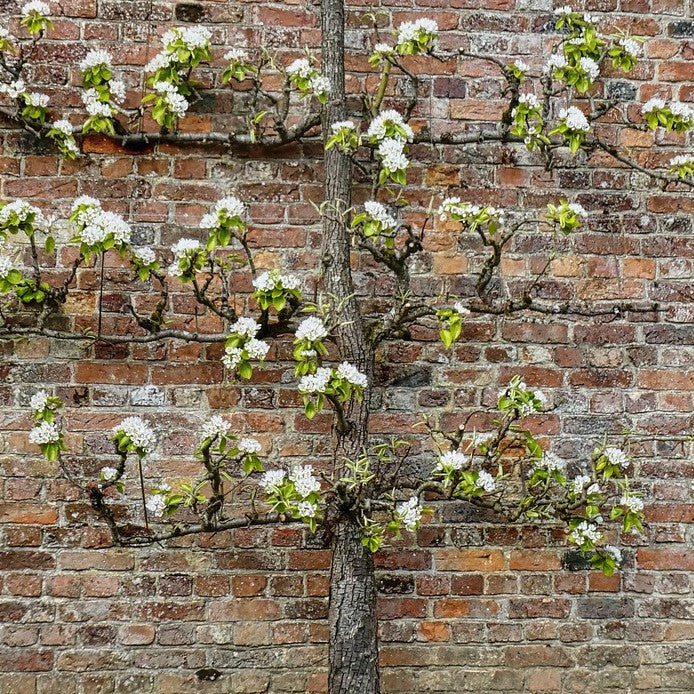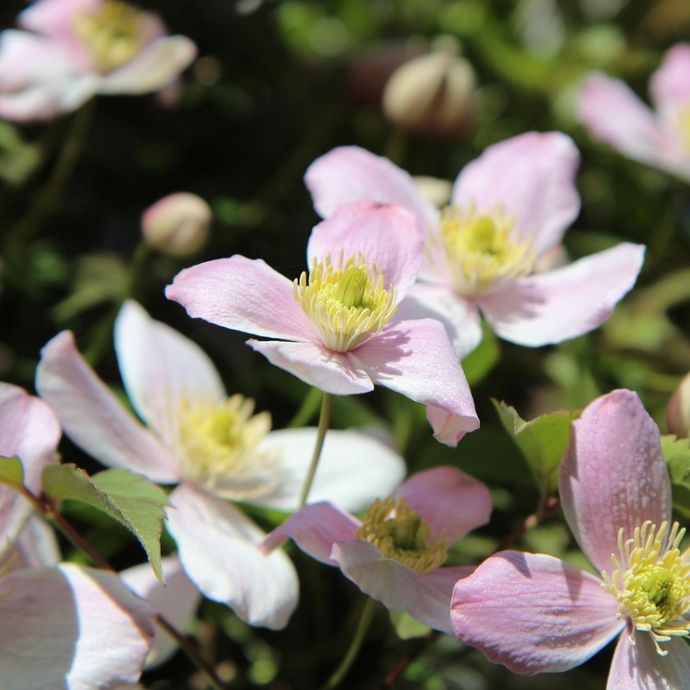Advice & Inspiration
Pear Tree Diseases: Identification & Treatments

Pear trees are typically happy, healthy and robust fruit trees well-suited to growing in the UK. That said, like all fruit trees – and all plants for that matter – they’re not immune to the odd problem. In this guide, we’ll be exploring the different pear tree diseases (and pests) and what to do about them.
But think of this more as a failsafe backup plan; a just-in-case guide to have in reserve should your tree ever find itself under the weather, rather than anything you’ll need to be referring back to regularly.
Jump to:
- Pear scab
- Fireblight
- Pear rust
- Canker
- Pear-bedstraw aphids
- Pear midge
- Pear leaf blister mite
- Disease-resistant varieties
Pear scab
Signs
A result of the fungus, Venturia pyrina, pear scab can affect the entire tree, including the leaves, shoots and fruit. If you notice brown/black patches on your pears, cracking on shoots or downy, dark areas on the leaves, then scab might well be the culprit. Don’t worry, though, while unsightly, impacted fruit can still usually be eaten.
Treatment
The best thing to do if you notice scab is remove affected plant matter by raking up fallen leaves and pruning out infected shoots, disposing of them via burning or through your local council’s garden waste collection scheme.

Credit: Flickr
Fireblight
Signs
A problem caused by the bacteria, Erwinia amylovora, fireblight causes the leaves of the pear tree to shrivel and turn brown, while the wood of the tree can take on a reddish-brown colour beneath the bark. It gets its name from the burnt look it can create.
Treatment
If your pear tree’s been affected by fireblight you’ll need to cut out the infected areas and burn the material. Make sure you disinfect your shears or secateurs to prevent the risk of reinfection at a later date.

Credit: Flickr
Pear rust
Signs
This fungal disease is caused by Gymnosporangium sabinae and can also affect juniper trees. It’s one of the more easily-identifiable pear problems, thanks to the bright orange, rust-like spots that appear on the leaves of affected trees. Occasionally, branch cankers can also appear, though these are less common.
Treatment
Remove any infected leaves, and clear the area of any fallen leaves that look as though they might also have been affected. Applying a winter tree wash (a mixture of diluted plant oils) can also be beneficial.

Credit: Flickr
Canker
Signs
Although less common on pears than apple trees, fungal canker (caused by Neonectria ditissima) can still be an issue. The gnarly, sunken patches mainly appear on the bark of the tree’s branches, but can also be found on the trunk.
Treatment
The best way to deal with canker is to remove the affected areas, pruning away the dead branches and applying a layer of wound sealant (typically made using natural resin or latex compounds) to help mitigate against reinfection.
Pear-bedstraw aphids
Signs
These pesky little insects have a purplish appearance and tend to appear from spring to summer. If numbers are large, you may notice some sticky honeydew secretions appearing across your pear tree, while affected leaves might start to curl and turn slightly yellow. These insects don’t pose a significant danger to your tree’s health, however.
Treatment
While these aphids might be a bit annoying, they’re not the end of the world in small numbers and can actually help the overall biodiversity of your garden. If they’re becoming a bit unmanageable and large colonies are developing, then you can always give the affected areas a spray with some soapy water.
Pear midge
Signs
Unfortunately, you might not know you’ve got a problem with pear midges (more specifically, their larvae) until your pear fruitlets have turned black and fallen prematurely off the tree. Still, rather that way around than biting into one…
Treatment
To control these pests, remove affected fruit and dispose of them before they fall to the ground and the larvae has the chance to enter the soil. You can also give the soil around the base of your tree a good hoe to try and kill the larvae and stop them spreading.
Pear leaf blister mite
Signs
These sap-sucking critters can’t be seen with the naked eye, but you’ll know they’ve been around your pear tree if you notice raised blister-like bumps on your tree’s leaves (yellowish or green in colour, later turning brown).
Treatment
Provided that the spread doesn’t seem too extensive, simply removing the affected plant material should suffice. If the whole tree seems to be affected, however, then your best bet is actually to let it be, as removing too much foliage can be an issue and the damage caused by the mites themselves is relatively superficial.

Credit: Flickr
Shop our favourite disease resistant pears
Final thoughts
Hopefully, having read this you’ll know how to look after your tree if ever it comes a cropper with one of the pear tree problems highlighted. As we said at the start, your tree is more than likely going to be absolutely fine, but if ever it’s not? Well, now you’re prepped and ready. Why not take a look at our pear tree planting and pruning guides while you’re here?




















